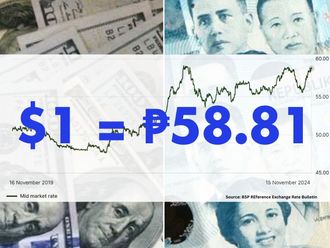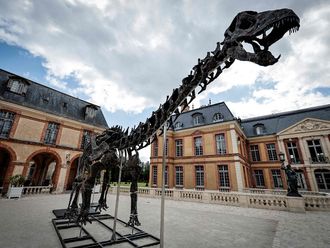Sydney: The Reserve Bank of Australia signalled confidence domestic growth would weather a “fragile” global economy in its decision earlier this month to maintain the highest borrowing costs in the developed world.
“Domestically, the economy was forecast to grow around trend pace over the medium term,” according to minutes of the August 7 policy meeting released today in Sydney explaining why the benchmark rate was held at 3.5 per cent. “The risk of significant economic and financial disruption in the euro area continued to cloud the outlook.”
The decision to extend the pause after 1.25 percentage points of reductions from November to June reflected stronger consumer purchases, a pipeline of capital spending and job growth that signalled the economy is weathering a global slowdown. Since RBA Governor Glenn Stevens last lowered rates on June 5, the currency has risen 7.2 per cent and the minutes showed the Swiss National Bank was buying.
Switzerland’s central bank bought about 100 billion euros ($123.6 billion) over May and June, and further large purchases probably occurred in July to maintain the franc’s peg against the euro and avert inflation pressures, the RBA said.
“While some of these purchases were retained in euros, a sizable share was converted into other currencies, including a modest amount in the Australian dollar,” the minutes said.
Currency Gains
The Australian dollar advanced to $1.0479 as of 1:11pm in Sydney, from $1.0455 before the minutes. It has averaged $1.02 in the past two years, up from 72 US cents for the prior decade. At the same time, the terms of trade, a measure of export prices relative to import prices, fell in June to the lowest since 2010, after reaching a 140-year high last year.
“The exchange rate had remained at a relatively high level notwithstanding the weakening in the global outlook and decline in commodity prices,” policy makers said in the minutes. The so-called Aussie has closed above parity with the US dollar for all but 23 days this year, remaining above the average of 75 US cents since the currency was floated in December 1983.
“Once again, the inconsistency between the peak in commodity prices and the elevated Australian dollar was highlighted,” said Alvin Pontoh, an Asia-Pacific strategist at TD Securities Inc in Singapore. “We expect this to be the main theme in Friday’s RBA governor’s semi-annual testimony to parliament,” he said, referring to a hearing where Stevens is scheduled to speak in Canberra on August 24.
Hong Kong Inflation
Elsewhere in the Asia-Pacific region, Hong Kong may report today that inflation slowed in July, according to a Bloomberg survey of economists, while India will also release consumer- price data for the same month.
Asian stocks advanced. The MSCI Asia Pacific Index gained 0.5 per cent to 121.38 at 12:11pm in Tokyo after earlier touching 121.42, its highest level since May 8.
In the US, Federal Reserve Bank of Atlanta President Dennis Lockhart is scheduled to speak on the economic outlook at a Latin American Chamber of Commerce gathering.
In Europe, Estonia and Ireland are scheduled to release producer-price inflation figures for last month. Polish data on consumer prices may show core inflation rose 0.1 per cent last month, unchanged from the June pace, according to a survey of economists.
Since Stevens’s decision to extend the rate pause at 3.5 per cent, government reports painted a mixed picture of the economy: Employment and wages gained and home-loan approvals rose the most this year, while consumer confidence dropped by the most in five months.
Subdued Sentiment
“There were indications that consumer spending had retained some momentum in the June quarter, even though consumer sentiment remained at subdued levels,” the minutes said. “Earlier falls in interest rates and rising rental yields were likely to have increased the attractiveness of housing investment.”
Traders are pricing in a 24 per cent chance that the RBA will resume rate cuts next month and lower borrowing costs by a quarter percentage point to 3.25 per cent, according to data compiled by Bloomberg based on swaps trading.
“The global economic environment remained fragile, with the uncertainty emanating from the euro area affecting financial markets and potentially delaying spending by firms and households,” policy makers said in the minutes.
The RBA said there were indications that growth in China, Australia’s largest trading partner, “appeared to be stabilizing” at a more sustainable pace.
Property Crackdown
China’s economy expanded 7.6 per cent in the second quarter from a year earlier, the slowest pace in three years, as Europe’s debt crisis crimped exports and the government’s property crackdown cooled domestic demand. The slowdown may extend into a seventh quarter, with Deutsche Bank AG on August 9 cutting its growth estimate for the three months through September to 7.5 per cent from 7.9 per cent.
“There were signs that investment growth had steadied and some early indications that conditions in the housing market had also improved a little in recent months,” the RBA said, referring to China.
Powering the Australian economy is the biggest resource boom since a gold rush in the 1850s. The latest bonanza - for iron ore, coal and natural gas - is bringing investment projects the government estimates to be worth A$500 billion ($524 billion) and contributed to an unemployment rate of 5.2 per cent last month. That’s lower than 8.3 per cent in the US and 11.2 per cent in the euro area.
Employment growth “in the near term was expected to remain relatively modest,” according to the RBA minutes.
Mining companies including BHP Billiton Ltd and Rio Tinto Group are benefiting from demand for steel and electricity in emerging economies including China and India.
“Additional large resource projects had commenced or received approval in recent months, thereby sustaining the very large stock of work in the pipeline,” the minutes said. “This had occurred despite some mining companies adopting a more cautious approach to potential, but yet to be approved, investment projects.”












